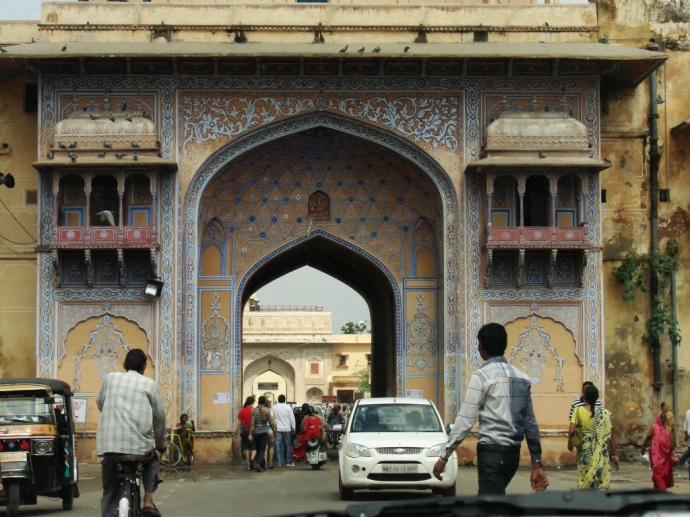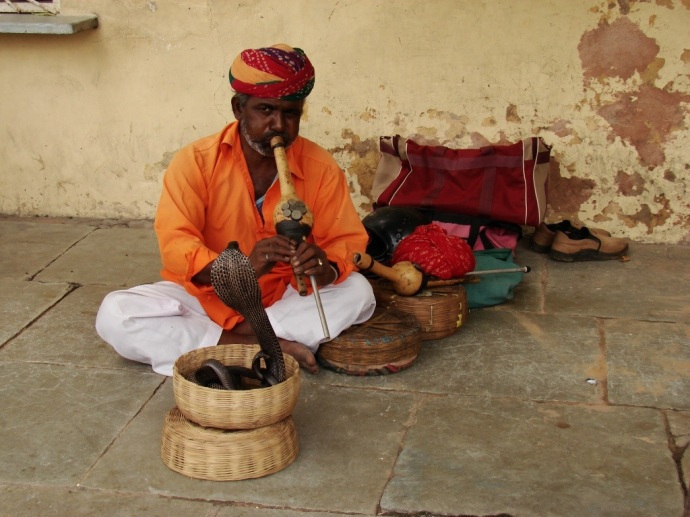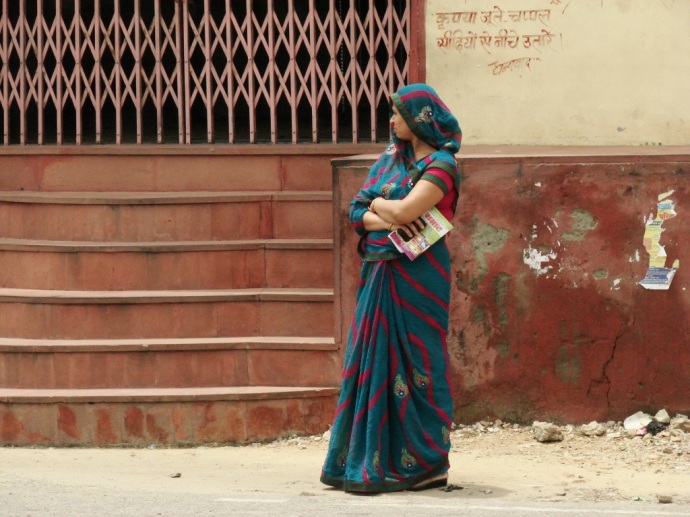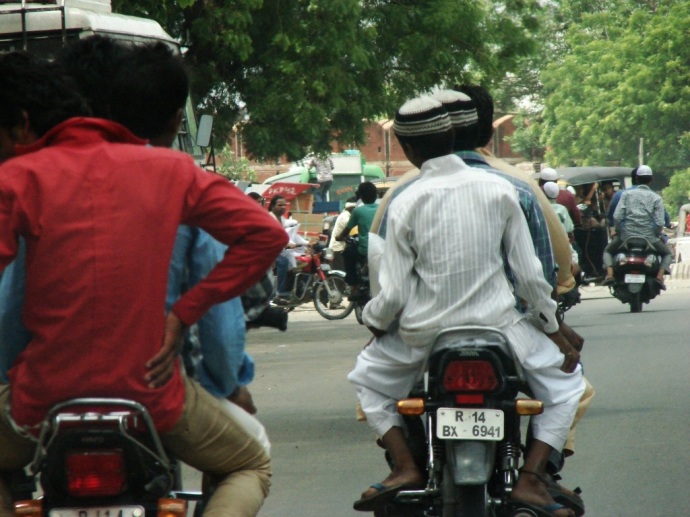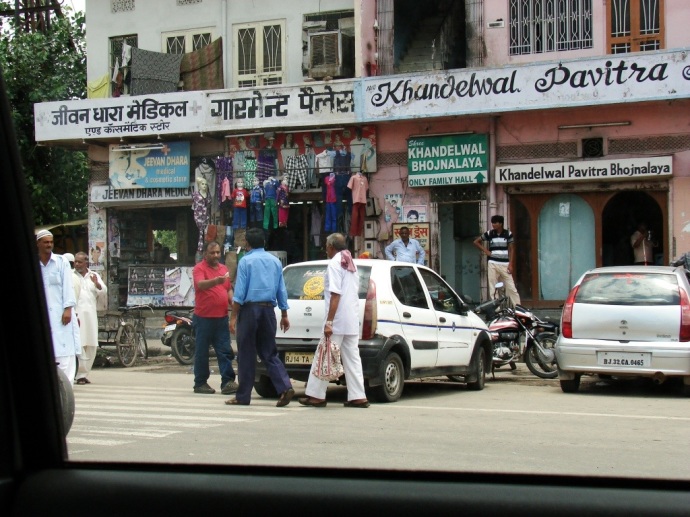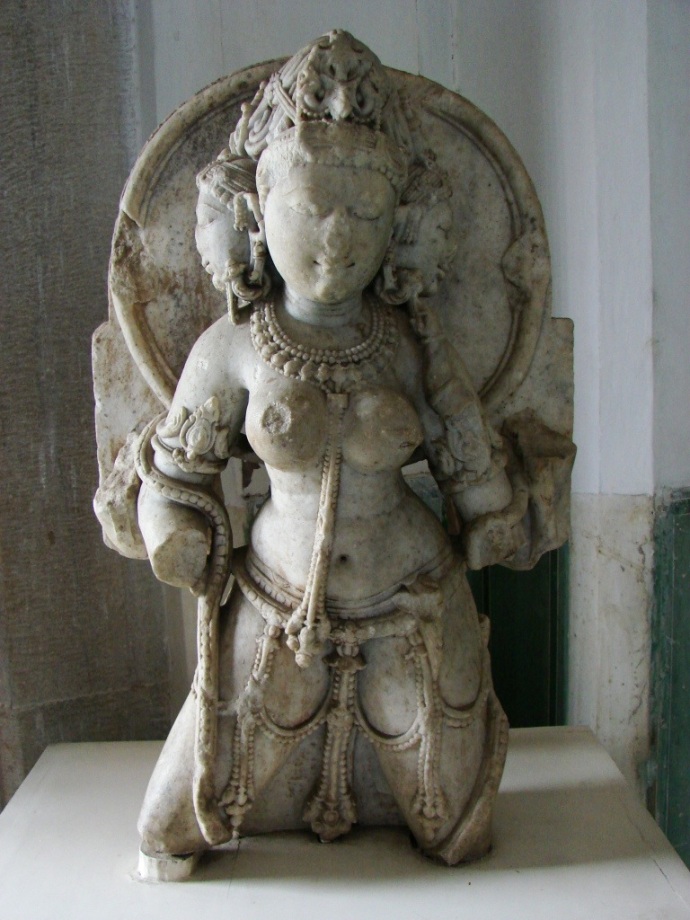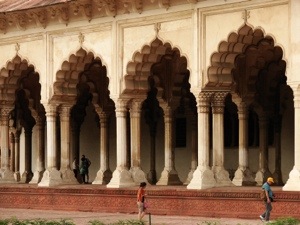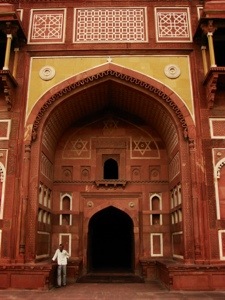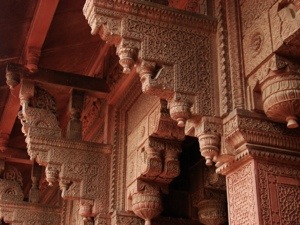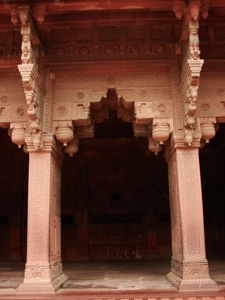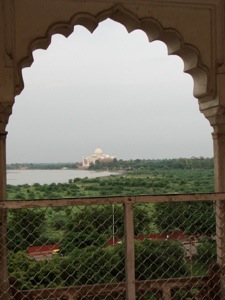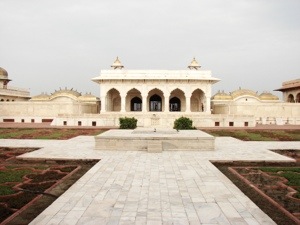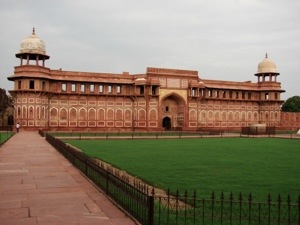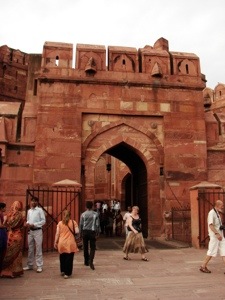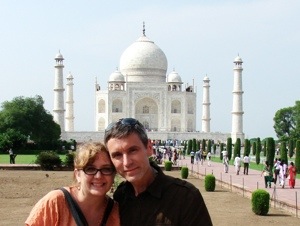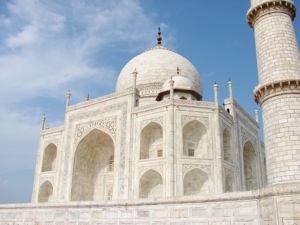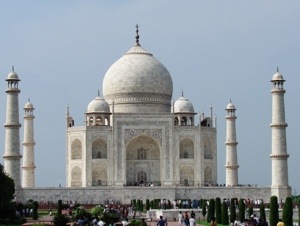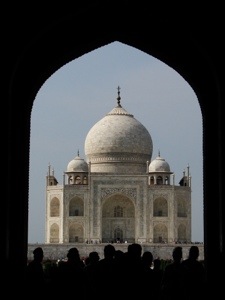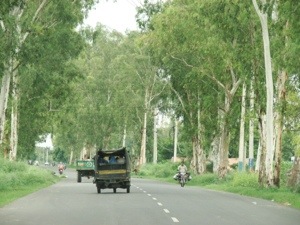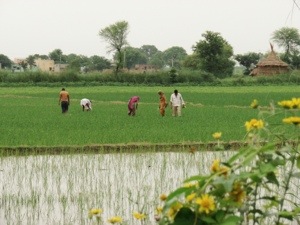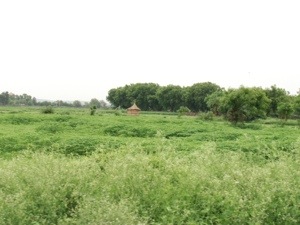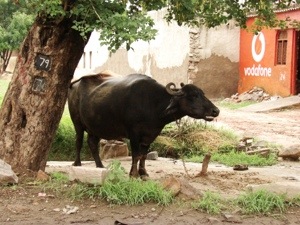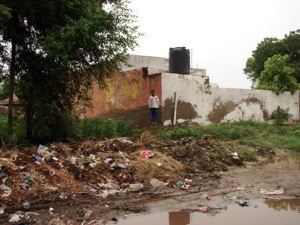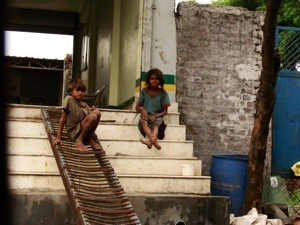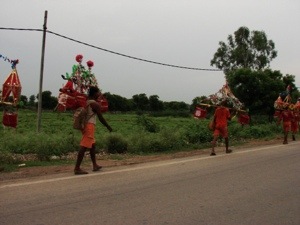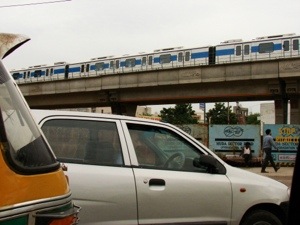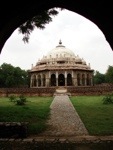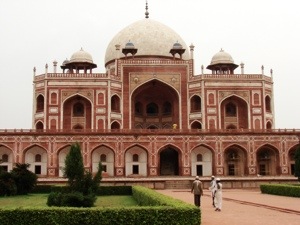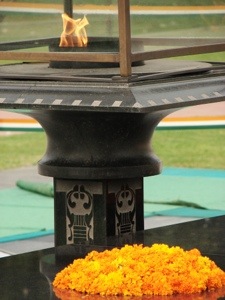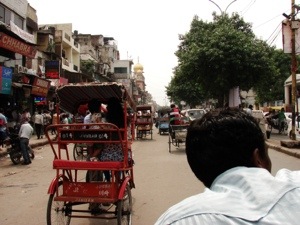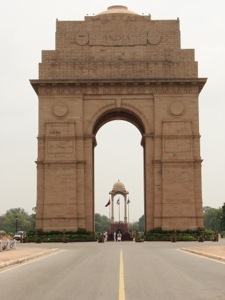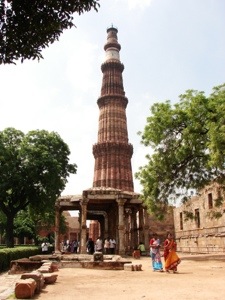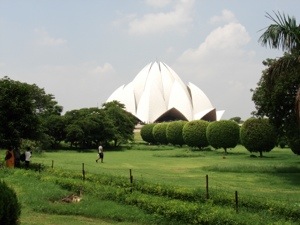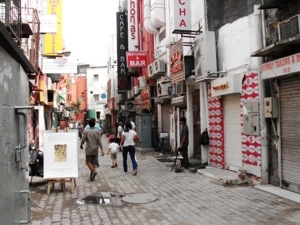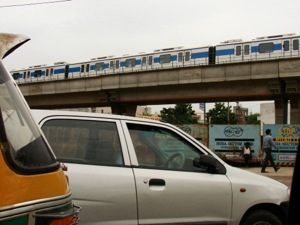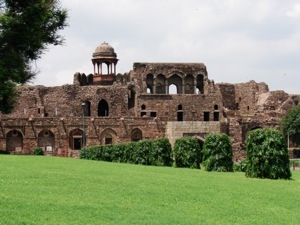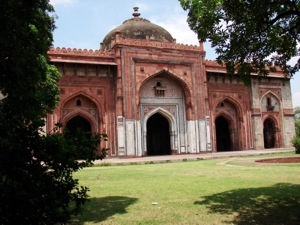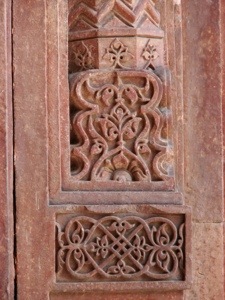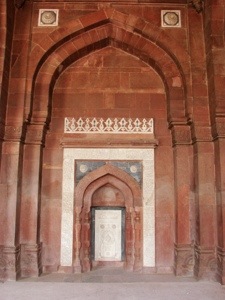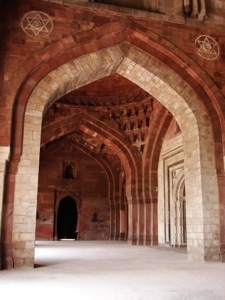Jaipur is simply fantastic. Situated in Rajasthan, Jaipur is one of the three points in the golden triangle, along with Agra and Delhi. Jaipur has much to offer, from dizzying array of historic sites to cultural experiences. Also known as the Pink City, Jaipur is a city of many colors. Of the numerous highlights of our trip, Jaipur provided several, including some of the most spectacular scenery. More on Jaipur to come.
Posts Tagged With: #HHTeacherTreks
Distribution of Islam in India
India is a large and very diverse population. India strives for plurality, but as is often the case, harmony can be difficult. Some basic tenets between Hinduism and Islam can be at odds with one another, and conflict has erupted historically and recently.
Analyze the map* below then respond to the prompts that follow.
DISTRIBUTION OF ISLAM IN INDIA BY STATE
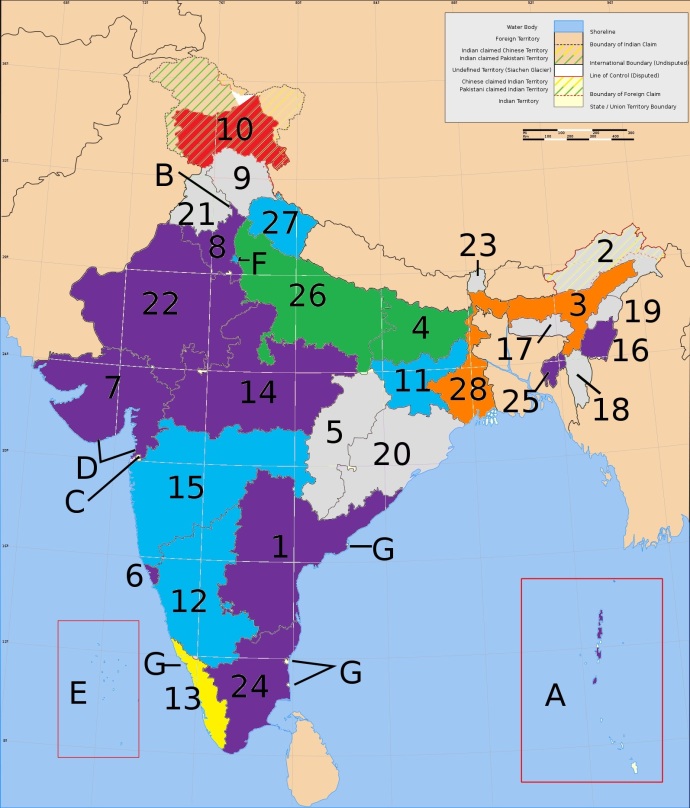
KEY:
Red – 50-100%
Orange – 25-50%
Yellow – 20-25%
Green – 15-20%
Blue – 10-15% – Indian National Average
Indigo – 5-10%
Gray – < 5%
STATES BY NUMBER:
1. Andhra Pradesh
2. Arunachal Pradesh
3. Assam
4. Bihar
5. Chhattisgarh
6. Goa
7. Gujarat
8. Haryana
9. Himachal Pradesh
10. Jammu and Kashmir
11. Jharkhand
12. Karnataka
13. Kerala
14. Madhya Pradesh
15. Maharashtra
16. Manipur
17. Meghalaya
18. Mizoram
19. Nagaland
20. Orissa
21. Punjab
22. Rajasthan
23.Sikkim
23.Tamil Nadu
24.Tripura
25. Uttar Pradesh
26. Uttarakhand
27. West Bengal
(Map courtesy of Rode Idias, Wikimedia Commons)
PROMPT:
1. Using the map showing the distribution of Islam in India, predict where you think the most conflict may occur between the Hindu and Muslims in India. Explain why.
2. Read about the events that happened while Mr. Wright was in India, and about the history of this disputed region here . Was your prediction correct?
3. What can we conclude about the nature of border conflicts from this case study?
FURTHER READING:
For more information about this topic research the topic keywords:
India, Partition, Line of Control, LOC
Saraswati, Goddess of Knowledge
My wife and I are educators. As such, we have both come to have a fondness for Saraswati, the Hindu goddess of knowledge, education, learning, and the arts. Saraswati is the consort of Brahma, and her knowledge brings order out of chaos, a metaphor I appreciate.
Although often depicted riding a swan, playing a musical instrument called a vena, and carrying a book, this early sculpture (above) is one of my favorite representations of her. It can be seen at the City Museum in Jaipur, Rajasthan.
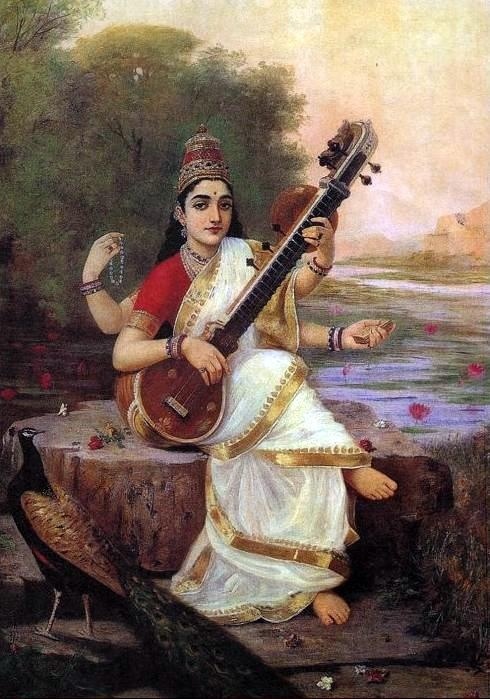
(Raja Ravi Varma, Goddess Saraswathi, oil on canvas, 1896. Maharaja Fateh Singh Museum, Lakshmi Vilas Palace, Vadodara, Gujarat. Courtesy Wikimedia Commons)
Hinduism
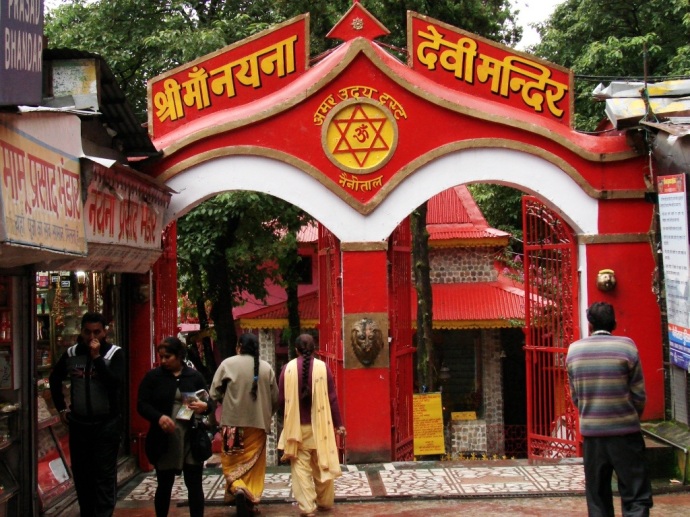
Hindu Temple, Nainital, Uttarakhand.
Wherever one goes in India, a frequently seen thread in the fabric of Indian culture (and neighboring Nepal) is that of Hinduism. It is seen in frequent shrines and temples scatted throughout India, seen in the colorful flower and cloth offerings available to devotees in street-side stands, seen in the bindi dot worn by many on the forehead. Approximately 80% of India’s 1.2 billion population practices Hinduism (BBC).
Despite it prevalence and status as a world religion, Hinduism, I think, is largely misunderstood by westerners. I do not claim to be an expert on Hinduism, but I have had the opportunity to observe and interact with Hindus for weeks. During that time what has struck me as most erroneous is the typical western view of Hindus worshiping multiple gods in what is often characterized as an idolatrous manner. Yes, there are many significant Hindu “gods” that fit into a pantheon and are interwoven into allegorical stories that reach back millennia into the Vedic texts. And yes, these “gods” are depicted as having superhuman and/or animal characteristics to whom reverence is shown and offerings are given. However, to stop there at that superficial level of observation is shortsighted.
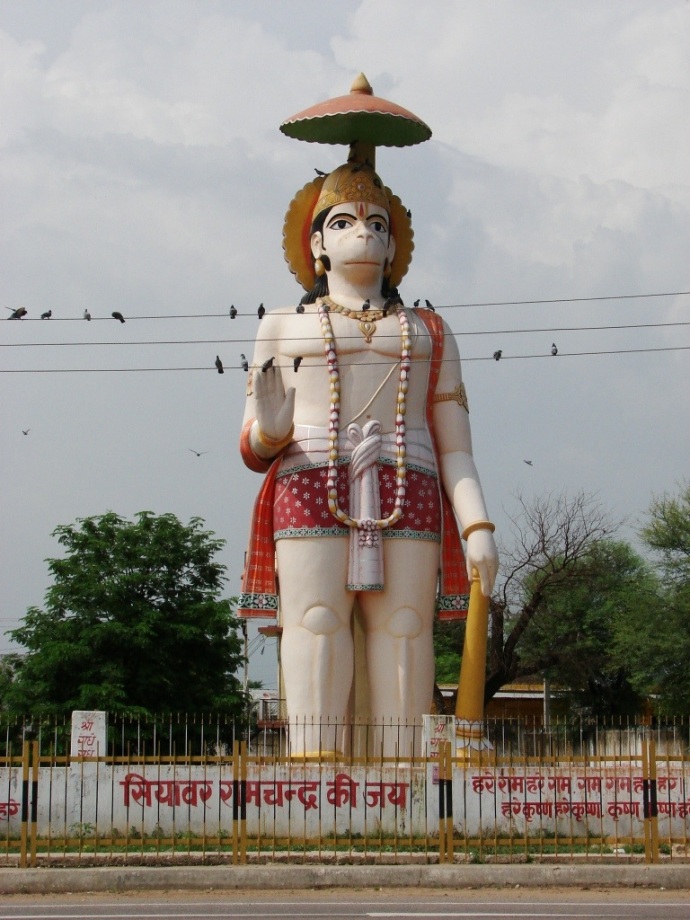
Hanuman, the monkey god, a monumental sculpture seen on the road to Jaipur.
The numerous gods present throughout the Hindu world, though worshipped and part of a complicated stories, are but many manifestations or avatars of a single omnipresent and omnipotent creator. A Hindu practitioner told me, “there are many names but only one God.” Hindus may say that God has taken on a physical form as a man, or as a “god” with anthropomorphized animal characteristics, all are said to be manifestations of the creator of the universe — that which cannot be fully conceived. This supreme entity is also symbolized as Om
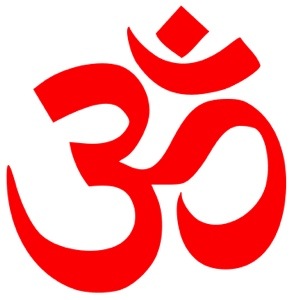
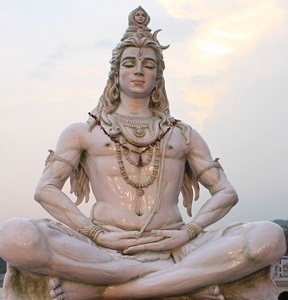
(Om symbol & Shiva, Courtesy Wikimedia Commons)
In it’s barest essence, Hinduism believes in the existence of one infinite Supreme Power, or God, worshipped by Hindus in various representative forms, such as of the Father or the Mother and Who is the Creator and progenitor of the Universe. The most fundamental tenet of our religion lays down that doing good to other beings is the highest form or Worship of the the Lord and, conversely, harming them the worst form of sin.
-Birla L.N., Hinduism: A Philosophy of Life
Shri Lakshmi Narain Temple, New Delhi
The Agra Fort
Only a few kilometers away from the incomparable Taj Mahal is the Agra Fort, a fortified palace built by the Mughal emporer, Shah Jahan. More than a simple military stronghold, the fort is built with a combination of red sandstone and white marble, and houses a palace of incredible architectural details.
Shaw Jahan’s son, Aurangzeb, eventually seized power from him and he was emprisoned at the palace. From the white marbled palace one can gaze along the banks of the Yamuna River at the incomparable Taj Mahal, where his wife is entombed.
The Taj Mahal
Agra is home to one of the seven wonders of the modern world: the Taj Mahal. It is India’s largest attraction and is the largest tourist attraction in all of Asia. Built as a mausoleum to his beloved wife, Mumtaz Mahal, by the Mughal emperor, Shah Jahan in 1631, it was designed by a Persian architect.
One sees countless images of the Taj, and one can read about its details endlessly. What strikes me about the Taj is this: it’s shear beauty is genuinely awesome. It is one of the most beautiful sites I have ever seen. It was described by Rabindrath Tagore as “a teardrop on the cheek of eternity” (Lonely Planet). Well said.
I am also struck by its exquisite craftsmanship, and its utterly immense size — something usually not depicted in photographs. As a reference of scale, note the size of the people walking into the Taj’s front entrance. Stunning. Simply stunning.
The Road to Agra
Heading southward from Delhi to Agra, we first pushed though the bustling commotion of Gurgaon, the southern most reaches of the Delhi metro. Typical Indian street scenes include countless people making their way to work and attending to their daily affairs amid the innumerable roadside stands selling snacks and wares under tangles of power lines.
On the road we encountered many Hindu pilgrims dressed in orange and carrying shoulder baskets decorated with religious symbols. These pilgrims were making their way home on foot, walking hundreds of kilometers from Haridwar in the north where they collected water from the Ganga to bring home with them.
The city streets eventually give way to rural scenes. Roaming livestock along the roadsides and throughout the villages become frequent, and cars must be careful to avoid the cattle, goats, and water buffalo, else risk the wrath of the inhabitants. Agricultural fields, workers, and field quarter made of mud and manure dot the landscape. Colorfully dressed workers dot the green of the rice fields, a enormous cash crop for India.
Drivers race ahead in the clear, even stretches of road, but these segments of the journey are punctuated by the many steel gates cars must zig-zag through, designed as speed controls. The many toll gates and numerous potholes are equally effective yet, Indian drivers press on at breakneck speeds.
Tax collection points, of which there are many, provide ample opportunity for hawkers to sell their goods. Jewelry, bottled water, illustrated tourist books, and food items are common, especially when tourists are waiting in their car while their driver goes into the office to pay the tax. At one location, a teenage boy approached our car with a basket. Fortunately, the door was locked and the window rolled up because the boy opened his basket to reveal a cobra flaring his hood! He was seeking payment for photographs of his cobra. My wife recoiled at the sight of the cobra, and the boy soon left when he understood I was not interested in paying for a photo. No sooner did he leave than we were startled by a langur on a leash which suddenly hopped up on the edge of the car door and pressed his face against the glass, fogging the window with is breath. His owner was also looking for payment for photos.
Colorfully painted trucks dot the roadway. Truck horns offer a somewhat musical phrase while various cars announce their presence or intentions with an array of sharp tones, from beeps to blasts.
Traveling the highway to Agra is tiring; the surging speeds, fast lane changes, and frequent breaking wears on you, even as a passenger. It must be exhausting for a driver. After a few hours, we welcomed a washroom break (where a tip to the attendant for paper towels is expected), and lunch. The rest-stop owners know they have a captive tourist audience headed to Agra — the charge for a cold can of Coca Cola is 160 Rupees, or about $3.00!
Eventually the roadway reaches Agra, another busy city with clogged roadways, and home to a Mughal Empire stronghold, and one of the seven wonders of the modern world — the Taj Mahal.
Amazing Delhi
Delhi has provided an amazing four days! My #HHTeacherTrek is off to an incredible start. I have found myself speechless multiple times for a variety of reasons
The people we have interacted with are profoundly friendly and helpful, the historic and cultural sites are rich with history and stunningly beautiful, and the cultural experiences are deep in intensity. Color abounds and cultural variety is everywhere including Hindu, Muslim, Sikh, Jain, and tribal traditions. A variety of flavorful food can be found easily, reflecting the rich cultural heritage of Delhi’s dynamic population and long history due to the country’s role in the spice trade.
The city, and India for that matter, are not for the faint of heart. It is a place of extremes and of paradoxes. The beauty of the many cultural, historic, and residential sites is juxtaposed against widespread, extreme poverty and the unsanitary conditions the poor and working classes endure. Traffic is extremely challenging with cars, bikes, motorcycles, auto-rickshaws, mopeds, buses, & trucks forever pushing forward to their destinations. Traffic lanes, although painted on the streets, are merely suggestions. And always present are the honking of horns used as a simple and frequently warning to communicate one’s presence or intended direction in the jostling commotion.
Delhi’s historic and cultural site are numerous, many bearing great significance. Multiple locations are World Heritage sites. The historic importance of many Delhi locations reflect a long history of Hindu and Muslim influences. The establishment of the Mughal empire in the 14th century has resulted in Persian influences through the present. But Delhi is not just steeped in ancient world history. Sites of contemporary significance and reverence can be found at locations such as India Gate — a WWI Memorial, and the Raj Ghat — the place along the Yamuna river where Ghandi Ji and other revered figures were cremated.
Delhi’s Khan Market is a bustling and hip urban center. Fashionista’s can satisfy their cravings at trendy boutiques. Western and Indian styles meld together amidst streets teaming with motorcycles filled with colorfully dressed women in flowing, silk saris riding side-saddle behind their boyfriend drivers. Khan Chacha provides flavorful kabobs and other street-foods in a clean and inexpensive setting, accessed through a narrow alley that is distinctly Indian.
Religion is a very significant element of daily life in Delhi, and all of India. It is a subject worthy of many additional posts. Of course, Hinduism provides the major religious current in India however, Islam is present throughout, and a fast-growing tradition. Although India is the home of Buddhism, they constitute a small minority. Jainism, a religion with roots in Hinduism, can be found but is a minority presence as is the Sikh tradition.
One could go on and on about Delhi, but this will have to suffice for now. As time permits, more posts about individual topics will follow.
Namaste.
Purana Qila
Said to be built on the ancient site of Indraprastha, a city belonging to the Pandavas dating to 400 BCE, Afghani ruler Sher Shah built the fort of Purana Qila in the 1540’s. Within the walls of the Old Fort, Sher Shaw built the Qila-i-Kuhran Mosque. Now in ruins, the mosque’s construction uses local red sandstone, white and black marble and it serves as a tomb.
Next Stop: Delhi
Next stop: Delhi! I had a great flight to Frankfurt and met an interesting engineer for Mercedes. We had a great conversation, I got a little sleep, and had excellent service on Lufthansa. Can’t wait to meet my wife half way around the world!

